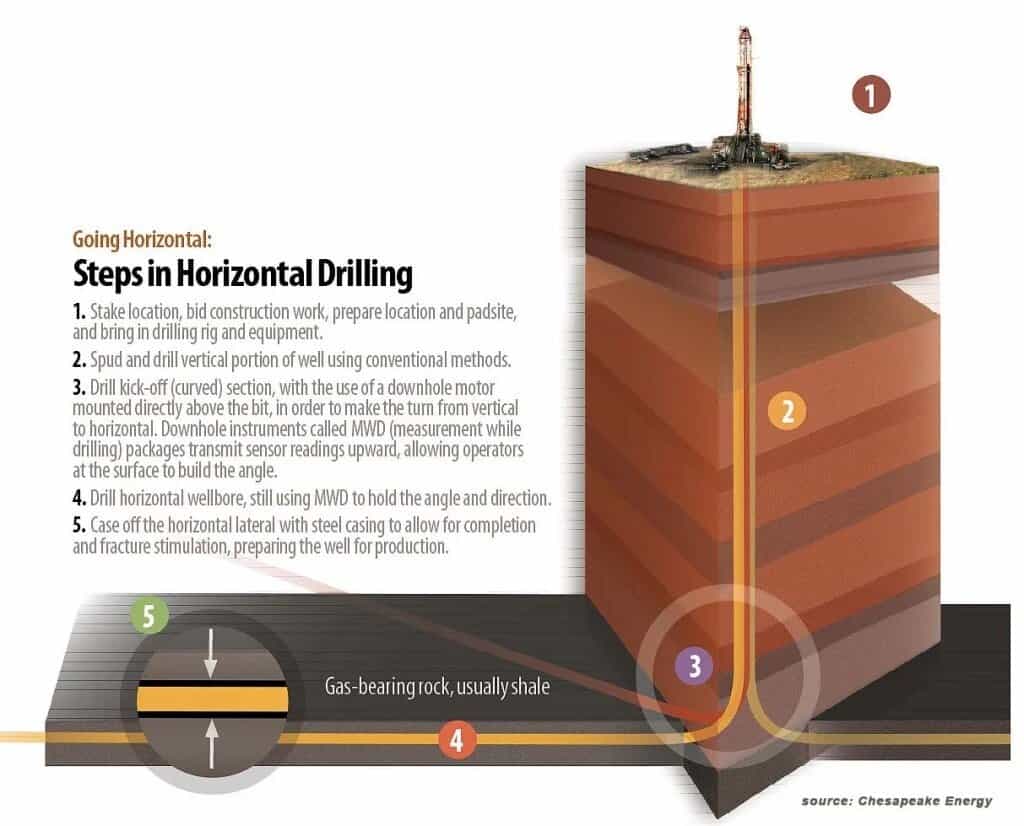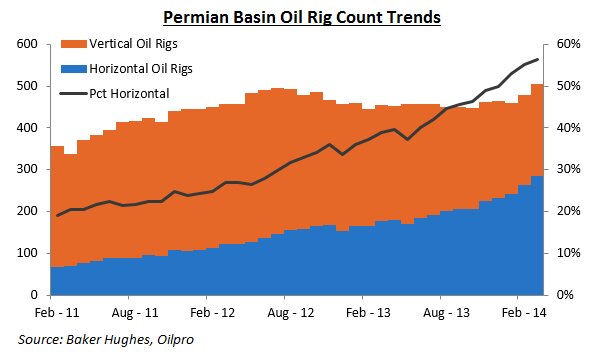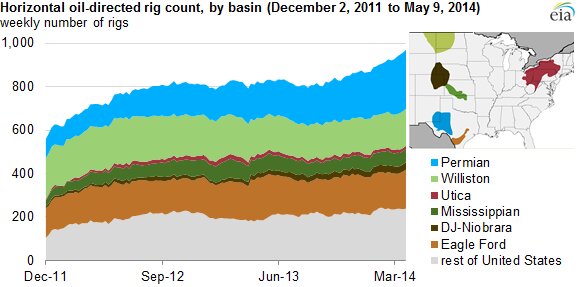During my continuous search for knowledge in my industry I have touched on horizontal drilling in a few blogs. I know that it is considered unconventional because it is a newer way to drill. Since is it a newer drilling technology I want to know more about it. Why has it become so popular? Is it more or less financially risky than conventional drilling? Why is the Permian Basin the leader in this style of drilling in the United States? So off we go.

Horizontal drilling is defined as drilling of an oil or natural gas well at any angle that exceeded 80 degrees to the vertical, so the well runs parallel to the geological formation containing the oil or gas. Production from the resulting well, known as a horizontal hole, is often three to five times greater than from a vertically drilled well. So basically the well is drilled straight down, per the usual methods. Once they have reached the desired geological formation and/or depths, the well will make an angled turn to become horizontal within the formation. Obviously this is very useful to the oil and gas companies. They can reach much larger amounts of natural resources by drilling multiple wells from the same vertical well bore. This helps companies with capital investments by utilizing the same well over and over. There is a positive environmental effect too. Since the company can drill so many wells from one site, you have less drill sites. The picture below is a perfect example of just that.
Little side note for you, directional drilling and horizontal drilling are interchangeable words.
So why has the Permian Basin completely taken over the market with horizontal or directional drilling? It’s all about the geology baby! Basins contain tight sand and shale formations. Shale is a rock formation that has very low permability. For the longest time, oil an gas companies have known about the untapped natural resources within the multi-layered reservoirs of the Permian Basin. Technology just had not caught up. Now, I checked an 0bnoxious amount of different sites to find the history of horizontal drilling. I never got a specific date or location of inception. The general consensus is that the method dates back to 1929 but was first used in Pennsylvania in 1944. More practical applications of horizontal drilling really took off in the 1980s with the oil boom. The technology has become so advanced that instead of drilling vertically to come in contact with 100 feet of rock, you are adding an angle so the well runs horizontally and comes in contact with 5,200 feet of the same formation. I’m not the brightest crayon in the box but I can guess what scenario is going to give me a better outcome.

Now remember the Permian Basin is pretty darn big, 250 miles wide and 300 miles long to be specific. So this is a lot of room for our industry to spread out. There is more than one shale in favor with companies too, so that has added to the growth in the area. Let’s get some numbers on that growth. The data and charts below from the U.S. Energy Information Administration (eia) website shows some specifics on the immense growth in the Permian Basin and shale plays within. The eia website stated that the changes really began in 2013.
From the week ending on December 27th 2013, to the week ending on May 9th, 2014 the number of horizontal, oil-directed rigs in the Permian Basin rose by 63 rigs, 50% of the total increase in the United States.

During the first quarter of 2014, almost 80% of all the new horizontal, oil-directed drilling in the Permian Basin took place in just five counties

So once again I have gotten to brag about something in the state of Texas, the land I love. That always makes me extremely happy. Yea, yea, I know, part of the Permian Basin is in New Mexico, but the majority of this amazing geological resource is in Texas.
There are different types of wells being drilled in the Permian Basin. With that comes different resources being pulled from within it, natural gas is one. Whether your natural gas needs are related to dehydration, ambient cooling, CO2 removal, NGL recovery, fuel-gas conditioning or H2S removal. Click the link below to learn how Croft Production Systems can design equipment to meet your needs.
References:
http://www.eia.gov/todayinenergy/detail.cfm?id=16291
http://www.mrt.com/business/article_733c0d96-e780-11e3-adb6-001a4bcf887a.html
https://www.nasdaq.com/articles/permian-basin-shale-leads-texas-oil-resurgence-2014-08-08
http://www.encyclopedia.com/doc/1O13-horizontaldrilling.html
https://www.rigzone.com/training/insight.asp?insight_id=295&c_id=1
http://clineshalecentral.com/wp-content/uploads/2014/03/original1.png












